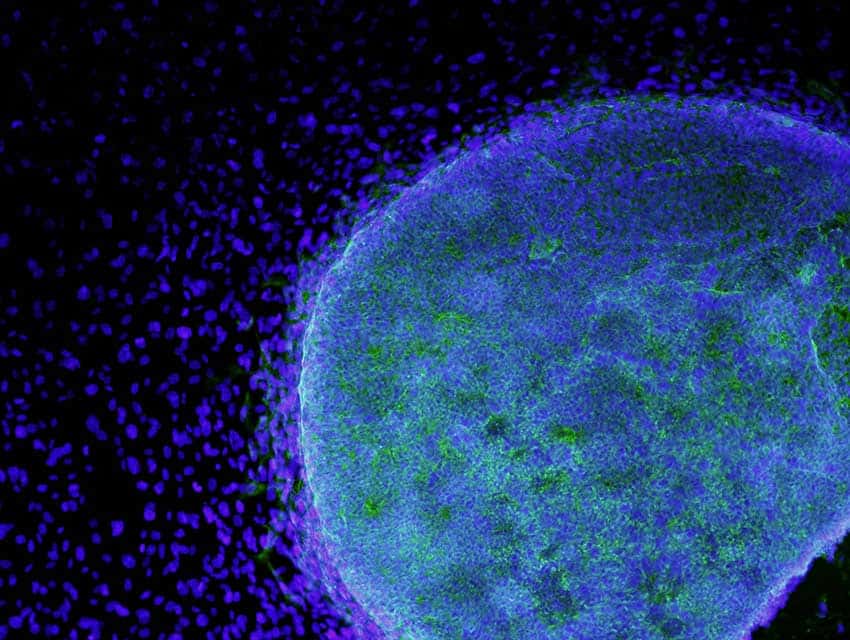
Days before his death on 10 January, Cardinal George Pell was being discussed in Australian media for a different reason.
Customarily, on 1 January each year, federal government cabinet papers from 20 years ago are unsealed and released by the National Archives of Australia. On New Years’ Day this year, the public was able to see the 2002 cabinet papers.
2002 was the year that federal parliament overturned the prohibition on embryonic stem cell research, allowing unwanted embryos left over from IVF procedures to be used for medical research.
The cabinet papers revealed, among other things, that then- Prime Minister John Howard sought advice on the matter from then- Archbishop Pell, but ultimately did not follow that advice and put his support behind the research being allowed.
Predictably, the left-wing media outlets gloated at the revelation that a renowned conservative prime minister they hated very much rejected the view of a renowned ultra-conservative archbishop they hated even more.
“For all the promises that embryonic stem cells would be used to repair spinal cord injuries … the sad reality is that – from the very beginning – the research was primarily about expanding the IVF industry.”
Prime Minister Howard’s justification for allowing the research to proceed was that it was preferable to have them used for research than allowed to succumb to the elements and be discarded.
“Research or rubbish” was how former Senator Amanda Vanstone described it.
Surprising to no one, the 20 years since that fateful law was passed has demonstrated that Archbishop Pell was right. For all the promises that embryonic stem cells would be used to repair spinal cord injuries and cure diseases such as Parkinson’s, the sad reality is that – from the very beginning – the research was primarily about expanding the IVF industry.
The law requires anyone who wants to use frozen embryos to apply to the National Health and Medical Research Council (NHMRC) for a license.
The application and the grant of license contains details of the aims of the research to be conducted.

An online database kept by the NHMRC shows that, over the past 20 years, there has only been one applicant for a license that was not an IVF provider.
Moreover, only three out of the 24 licenses granted since the research began had researching a cure of treatment for disease as their goal.
Overwhelmingly, the embryos used in research are being used either to improve IVF techniques or to increase the accuracy of genetic diagnosis of embryos (so that those found to have genetic problems can be discarded and denied an opportunity for life.) There is nothing therapeutic about this type of research.
Two decades ago, embryonic stem cell research was sold to the public and parliamentarians as a way to cure disease and heal injuries. The promises made at the time were messianic: those with spinal cord injuries would walk again, the blind would see and those with degenerative neurological conditions would be healed.
Today, it is being used to fill the coffers of the extremely wealthy IVF industry.
“When they suggested that Catholic politicians who voted in favour of these laws should not receive Holy Communion without repenting, they were threatened with parliamentary inquiries for interference in the legislative process.”
In Australia, IVF revenue for 2023 will exceed $720 million, or around $2 million each and every day of the year.
Even left-wing media outlets have begun to concede that the IVF industry profits from vulnerable women. They just haven’t yet made the link that this massive profit-making has been facilitated by research on unborn human life.
When Cardinal Pell and others like former Archbishop of Perth, Barry Hickey, spoke out against the use of embryos for research, they were derided as having a lack of compassion for those suffering from incurable illnesses (much like the criticism hurled at current church leaders who oppose euthanasia.)
When they suggested that Catholic politicians who voted in favour of these laws should not receive Holy Communion without repenting, they were threatened with parliamentary inquiries for interference in the legislative process.
They withstood the scorn and the threats because they knew that they were speaking the truth and giving a voice to the voiceless.
Related Articles:
